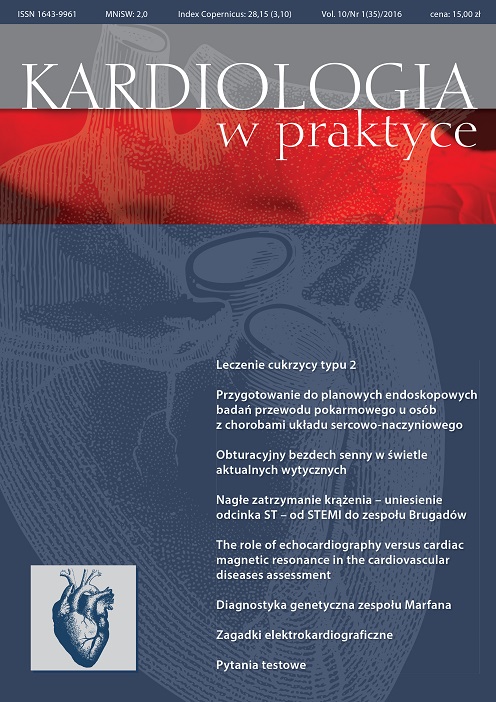Treatment of type 2 diabetes mellitus Review article
Main Article Content
Abstract
Increased insulin resistance and impaired insulin secretion, are the main pathophysiological features of type 2 diabetes, but impaired insulin secretion is generally progressive. The major environmental factors that increase the risk of type 2 diabetes are overnutrition and a sedentary lifestyle, with consequent overweight and obesity. Lifestyle changes including diet modification, increase in physical activity, weight reduction in the overweight and smoking cessation are essential components of the management of type 2 diabetes. Metformin is generally considered the first choice oral medication, unless contraindicated. A second oral agent of another class or insulin may be added if metformin is not sufficient. Other classes of medications include: sulfonylureas, thiazolidinediones-pioglitazone, dipeptidyl peptidase-4 inhibitors, SGLT-2 inhibitors, and glucagon-like peptide-1 analog.
If A1C target not achieved of dual therapy proceed to 3-drug combination. Due to the progressive nature of type 2 diabetes, insulin therapy is eventually indicated for many patients with type 2 diabetes. Basal insulin alone is the most convenient initial insulin regimen and insulin is usually prescribed in conjunction with metformin and possibly one additional noninsulin agent.
Downloads
Article Details

This work is licensed under a Creative Commons Attribution-NonCommercial-NoDerivatives 4.0 International License.
Copyright: © Medical Education sp. z o.o. This is an Open Access article distributed under the terms of the Attribution-NonCommercial 4.0 International (CC BY-NC 4.0). License (https://creativecommons.org/licenses/by-nc/4.0/), allowing third parties to copy and redistribute the material in any medium or format and to remix, transform, and build upon the material, provided the original work is properly cited and states its license.
Address reprint requests to: Medical Education, Marcin Kuźma (marcin.kuzma@mededu.pl)
References
2. Sieradzki J., Czupryniak L., Małecki M.: Cukrzyca, tom 1. Via Medica, Gdańsk 2015.
3. Polonsky K., Given B., Van Cauter E.: Twenty-four profiles and pulsatile patterns of insulin secretion in normal and obese subjects. J. Clin. Invest. 1988; 81(2): 442-448.
4. DeFronzo R.A.: From the triumvirate to the ominous octet a new paradigm of the treatment of type 2 diabetes mellitus. Diabetes 2009; 58(4): 773-795.
5. Standards of medical care in diabetes – 2015. Diabetes Car. 2015; 38: 1.
6. Zalecenia kliniczne dotyczące postępowania u chorych na cukrzycę 2015. Stanowisko Polskiego Towarzystwa Diabetologicznego. Diabetologia Kliniczna 2015; 4(supl. A).
7. Duckworth W., Abraira C., Moritz T. et al.; VADT Investigators: Glucose control and vascularcomplications in veterans with type 2 diabetes. N. Engl. J. Med. 2009; 360: 129-139.
8. Patel A., MacMahon S., Chalmers J. et al.; ADVANCE Collaborative Group: Intensive blood glucose control and vascular outcomes in patients with type 2 diabetes. N. Engl. J. Med. 2008; 358: 2560-2572.
9. Ismail-Beigi F., Craven T., Banerji M.A. et al.; ACCORD trial group: Effect of intensive treatment of hyperglycemia on microvascular outcomes in type 2 diabetes: an analysis of the ACCORD randomised trial. Lancet 2010; 376: 419-430.
10. Haas L., Maryniuk M., Beck J. et al.: National standards for diabetes self-management education and support. Diabetes Care 2013; 37(supl. 1): S144-S153.
11. Marrero D.G., Ard J., Delamater A.M. et al.: Twenty-first century behavioral medicine: a context for empowering clinicians and patients with diabetes: a consensus report. Diabetes Care 2013; 36: 463-470.
12. Strojek K.: Diabetologia. Praktyczny poradnik. Termedia, Poznań 2014.
13. UK Prospective Diabetes Study (UKPDS) Group: Effect of intensive blood-glucose control with metformin on complications in overweight patients with type 2 diabetes (UKPDS 34). Lancet 1998; 352: 854-865.
14. Raskin P., Allen E., Hollander P.: Initiating insulin therapy in type 2 diabetes. Diabetes Care 2005; 28: 260-265.

